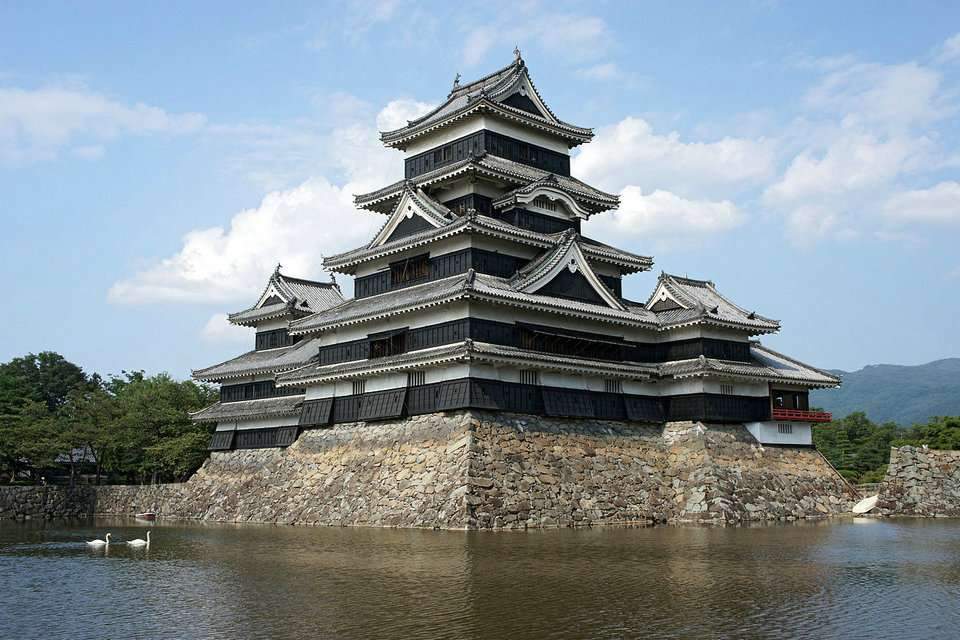The difference between Japanese architecture and Chinese architecture,
Both Japanese architecture and Chinese architecture bear some similarities, but there are many vast differences that tend to be overlooked.
Although China has historically influenced Japan through Buddhism; However, the differences are in the details.
One of the main influences of each architectural style is that the Chinese way of life included chairs,
while the Japanese way of life was not as it was customary to sit on the floor.
However, this custom changed in the Meiji period (1868-1912), and often,
the two types of architectural structures are confused.
Mainly due to China’s influence on Japanese traditions,
the Chinese architectural style has been in development for over a million years leading to hegemony.

Structural differences
Japanese architecture consists of wooden structures slightly above the ground,
and Japanese roofs also feature either tiles or thatched roofs.
Meanwhile, Chinese architecture is characterized by bilateral symmetry, closed open spaces,
an emphasis on horizontal orientation and a host of references to symbolism and cosmology.
An innovative aspect of Japanese architecture is the replacement of walls with sliding doors to create an adjustable sense of space.
Moreover, the use of low furniture is attributed to the fact that the Japanese sat on the floor and cushions, and then high tables were incorporated into the designs in the 19th century.
A staple in every living room in Japan, the modern low table is multifunctional and can be used for everything from raising the feet to serving tea.
Most people have seen them in their homes but are unaware of their history,
and for centuries the Japanese have sat on the floor at traditional tables called “low tables” or chabodai.
These tables, which were the center of every home, helped families eat and live together.
This tradition has continued into modern times and there are still many manufacturers producing them in Japan today.
Early Japanese architecture consisted of simple houses, which functioned simply and catered to the hunter-gatherer population.
The difference between Japanese architecture and Chinese architecture
However, the influence of the Han dynasty introduced the idea of more complex structures,
as Buddhism was also a catalyst in transforming architecture in Japan by introducing complex techniques using wood.
Chinese architecture classifies structures according to type, ranging from pagodas to palaces.
The Chinese also place great emphasis on the use of wood, and each structure and choice of material varies according to the function of the building.
For example, in China the homes of commoners and emperors were not made of the same materials and different styles were assigned to each geographic region and ethnicity.
Effects and transformation
Japanese architecture was transformed by two major events:
The Law of Separation of Kami and Buddha
This act formally separated Buddhism from Shinto temples and Buddhism from Shinto shrines, breaking a bond that had existed for thousands of years.
Westernization
Japan adopted a set of methods from abroad during the period of Westernization. The goal of this project was to make Japan compete with the first world countries.
Many architectural styles were adopted by foreigners, and architects studied abroad and introduced a modern approach to its buildings.
After World War II, Japanese architects gained international recognition which led to the international fame of architects such as Kenzo Tange.
The difference between Japanese architecture and Chinese architecture
Conversely, Chinese architectural principles remained largely unchanged, and major changes were applied mostly decoratively.
However, some movements, such as the Tang Dynasty, influenced styles in Japan,
Korea, and Mongolia among other countries.
In the 20th century, Chinese architects manipulated traditional structures to successfully create modern architectural designs.
The main impact of this shift has been the pressure for urban development, as urban development requires higher structures.
China’s levels were usually less than three stories high, and in its transformation,
Chinese architecture remained faithful to its traditional elements and skills including carpentry,
masonry, and stonework that are still applied in contemporary structures.
It has influenced many architects and recent architecture students,
and students from other countries regularly visit these architectural masterpieces to better understand them.

Tradition vs. Modernity
The Japanese language has always been highly regarded by the West, especially in the USA,
in terms of architecture and interior design.
As early as 1876, the Japanese participated in exhibitions such as the International Centennial Exposition in Philadelphia.
This resulted in a mixed enthusiasm for Japanese work from the West,
and a famous architect visited Japan and played an important role in the emergence of Japan and is a major influence on modernity.
According to cultural experts, the West has explored the quality of space in traditional Japanese architecture through the filter of Western architectural values.
On the other hand, China has been more influential in Asian countries,
and its architecture has influenced countries such as Sri Lanka, India and certain parts of Southeast Asia.
Other structures in Asian countries that tend to resemble Chinese-style architecture are Buddhist temples,
Hindu buildings and temples in Nepal, Japan, Korea, Thailand, Myanmar, Vietnam, Sri Lanka, Nepal, Cambodia and Laos.
Conclusion
Although Japanese and Chinese architecture tend to confuse, there are clear differences between what distinguishes them from each other.
Chinese architecture was cited by Liang Sicheng in 1984, as being as old as Chinese civilization itself,
demonstrating the fact that the Chinese have always excelled in creating an innovative system of design.
And in the At the same time, Japanese structures aspire to be more modern and to be able to adapt to their Western counterparts and demands.
The aesthetic of Japanese interior design is influenced by both religious figures and elements of the West,
while the Chinese excel in their traditional styles.
DotCone highlights an in and out speaker that spaces into its doc


 العربية
العربية